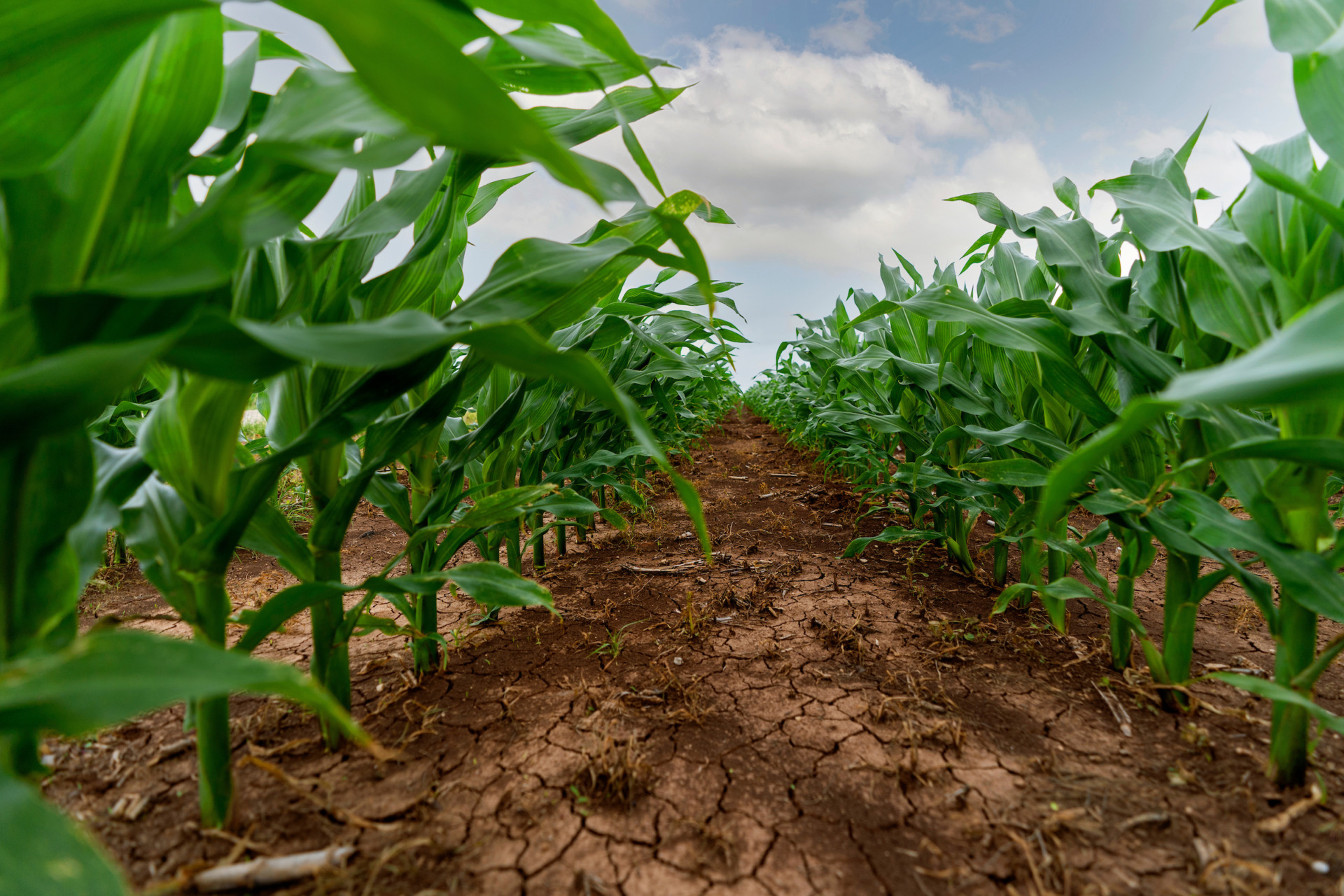Texas Corn Acres Decline As National Crop Grows

Corn plantings continue around the state and many fields are emerged and progressing, but many producers are switching from corn due to drought conditions. (Texas A&M AgriLife photo by Laura McKenzie)
Texas Crop and Weather Report – May 2, 2023
College Station, TX (May 2, 2023) - Corn acres are expected to increase nationally this season, while planted acres in Texas are expected to decline, according to a Texas A&M AgriLife Extension Service expert.
Much of Texas continues to experience significant drought conditions, which may be impacting planting decisions. Texas corn acres are expected to be 100,000 acres below last year’s total of 2.15 million acres, said Mark Welch, Ph.D., AgriLife Extension grain economist, Bryan-College Station.
Welch said the U.S. Department of Agriculture prospective plantings survey estimated growers nationwide would plant 92 million acres of corn. That number is 3.4 million above last year’s planted corn acres.
The additional prospective corn acres are spread across the country with an increase of 865,000 across the South, 950,000 acres in the Dakotas, 650,000 acres in Iowa, Illinois and Indiana, and another 550,000 acres in other Corn Belt states.
In some areas, there are questions surrounding final planting decisions due to weather, Welch said. Corn plantings in some parts of the Corn Belt states are still in doubt due to drought, and the near 1 million acres in North Dakota and South Dakota may be delayed due to a cold, wet spring.
Corn Belt states like Nebraska and Kansas that have been locked in exceptional and extreme drought received rainfall recently, and planting conditions were expected to improve if El Niño weather patterns deliver more rain. Growers in the Dakotas can typically plant corn into June, but a late spring snow melt and subsequent soggy conditions could push farmers to other crops like soybeans.
“As we get into May, the grain markets will be paying attention to the areas where there are questions about whether they actually get significant corn acreage planted,” Welch said.
Good prices push U.S. corn acres upward
The drought may keep Texas acres down, but the price incentive to plant corn is driving the increase in acres nationally, Welch said. However, there is a concern that good yields across the nation could drive prices down.
All grain prices have fallen in recent weeks, Welch said. But the fall is not confined to the grain markets. Other commodities like crude oil and copper are down as well, reflecting weakness in the overall outlook for the economy.
Corn futures prices remain relatively strong at $5.25 per bushel, but that is down from $5.75 a bushel a month ago and $7.45 a bushel at this time last year, he said. El Niño weather patterns are generally associated with good growing conditions in the Corn Belt, and Welch expects growers to realize 179 bushels per acre or better, which would mean record yields.
“Grain prices have really been under pressure the last 10 days or so,” Welch said. “Overall, yield outlooks are very positive, but the impact of a slowing economy and higher interest rates are playing into commodity markets. The use side is where the challenge will be if yields create a glut of corn.”
Welch said there is still good demand for grains now, and stored corn supplies are tightening. That could mean good cash prices for Texas producers who get their crop to harvest in July and August because they are typically among the first to enter the grain market each season.
However, Brazil has a big corn crop that will be harvested around the same time and could counter-balance that advantage on a global scale, especially with exports to China, he said.
“It seems like there is a lot of last-second decision-making around the state and in some areas of the country with significant acres that could go to one crop or the other,” he said. “It will be interesting to see which way everything goes and how the season plays out from now to harvest.”
AgriLife Extension district reporters compiled the following summaries:
Written by Adam Russell